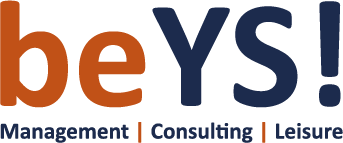Walk straight down your average street in this nation, and you will think it is more straightforward to just take down a loan than obtain a coffee. With 22,000 payday lending areas in the U.S., Starbucks would need to develop 3 x in dimensions to compete. Considering that the 1990s, yearly loan amount has distended to an predicted $27 billion. Which is a large amount of coffee.
Despite their development, payday loan providers are demonstrably controversial. Regarded as unfair and also predatory, payday loan providers have now been targeted by regulators, customer advocates and lawmakers whom object for their rates, which renders borrowers in a debt spiral. However, many lenders that are payday lawfully. And also the customer Financial Protection Bureau’s small-dollar loan proposition might never be the clear answer.
What exactly substitute for further regulation is going to make lending that is small-dollar while ensuring customers can certainly still get loans? My suggestion: Fintech companies and incumbents should collaborate on utilizing alternate information sources to qualify more borrowers for bank-issued loans that are small-dollar. This collaboration would offer reasonable loans that are short-term people, and would force payday loan providers to be more competitive inside their rates.
The typical cash advance debtor is basically misinterpreted. Presumptions about those that need a small-dollar loan do not necessarily hold.
It really is too an easy task to explain payday borrowers as foolish when it comes to economic alternatives they make. In certain instances, they decide for a quick payday loan simply because they can’t obtain a financial loan, and require an alternative solution. They did not qualify for a financial loan since they fall beyond your standard credit definitions. Structural dilemmas in exactly how creditworthiness is set can disadvantage individuals from building good credit. The payday lender could be the final resort.
Information from the Pew Charitable Trusts demonstrates that pay day loan borrowers are not always chancers. They truly are accountable individuals who simply fall outside credit structures. They may be apt to be divorced, for instance. But that willn’t be considered a barrier to building credit that is good. They are additionally expected to result from cultural minorities – again, not just a barrier.
And also the debtor can not be blamed for necessarily the results of taking down a quick payday loan. Practically a credit is demanded by no payday lender history. Which may look appealing for specific customers, but because of the high payment prices (annual APRs normal 391%) consumers are nearly specific to find yourself in rounds of defaulting and reborrowing.
Creditworthiness steps the level to which a economic provider can trust consumers to repay the funds it lends away. This is basically the broad objective of credit-scoring practices such as for instance FICO. Credit requirements consist of payments on past or current loans, standard of outstanding financial obligation, and whether borrowers have actually met other commitments such as for example bills, among other facets.
These credit quality facets exclude not merely people in developed areas, but the majority of huge amounts of individuals in appearing areas face the exact same issue. The worldwide unbanked (2 billion) in growing areas, and the ones surviving in poverty in industrialized countries (12percent for the entire U.S. population) already are excluded from accessing monetary services, and danger dropping into rounds of bad credit. With little to no or no credit score, they can not advance funds to construct good credit score. So the period continues on.
But there are many more groundbreaking methods to evaluate creditworthiness. Fintech organizations that lend to both continuing organizations and folks increasingly utilize alternative information sources and device understanding how to assess the chance that the debtor will repay.
For unbanked individuals in growing areas, device learning facilitates accurate measures of trustworthiness centered on alternative data sources. Lending platforms can analyze smartphone information to assess danger utilizing algorithms which extract information, https://personalbadcreditloans.net/reviews/extralend-loans-review/ supplying a holistic image of a man or woman’s riskiness. As an example, if users hold back until the night in order to make telephone calls, whenever prices are less costly, they’ve been more prone to be looked at lower-risk borrowers. The U.S. startup inVenture, additionally running in Kenya, provides loans by using this sorts of risk-analysis model. Other measures in its social information risk model consist of social media utilize and online behavior to rating borrowers.
Personal data utilized within the evaluation include: Do applicants have actually dependable contacts, do they follow appropriate measures and requirements of social behavior, or will they be erratic? Really, device learning can relay whether a possible debtor utilizes gambling web sites; such users that do perhaps not postpone having to pay debts and don’t gamble exceptionally are more inclined to be looked at creditworthy. Each one of these measures can enter developing a composite image of trustworthiness that enables fintech to lend to a larger variety of organizations and folks.
Having said that, legislation of every brand new credit-scoring model is still necessary, and therefore includes information protection measures. Privacy is a problem, which explains why regulation that is proper of industry is needed to make sure information administration doesn’t become problematic. Additionally, with regards to making certain the social information really amounts to usable information, people should always be concerned to execute the last credit choice. Advanced analytics and device learning build an image of credit rating, but usually it entails human analytical skills to recapture key learnings and insights from alternative information sources.
Banking institutions collaborating with fintech in credit-scoring underserved customers has other benefits. Fintech loan providers have actually leaner infrastructures than banking institutions, and thus spend notably less on credit scoring, payment and general conformity than old-fashioned players do.
When you look at the run that is long competition will end up collaboration, leading to a far more competitive and fairer option to pay day loans.
